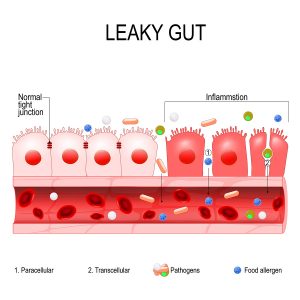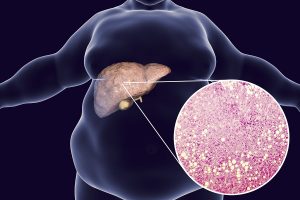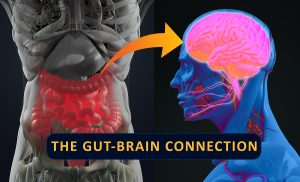Dr. Felice Gersh gave a talk at a conference in Las Vegas stressing the importance to eat right for a long life. This was at the 27th Annual World Congress on Anti-Aging Medicine in Las Vegas from Dec. 13 to 15th, 2019. The actual title of her presentation was “Nutrition for Longevity”.
Dr. Gersh has a fellowship in Integrative Medicine at the University of Arizona School of Medicine.
In the first place she pointed out that an anti-inflammatory diet consists of vegetables, fruits, nuts, whole grains, healthy oils like olive oil and fish. This is a modified Mediterranean diet. On the other hand, with a pro-inflammatory diet or Western diet, you eat high fat, cholesterol, lots of protein from red beef, high sugar, excessive salt and a lot of processed and fast-food.
Prevention of diseases
It is important to realize that for prevention of cardiovascular disease, cancer and degenerative diseases you need to eat fruits and vegetables, which contain important phytochemicals. They contain a wide variety of molecules, like carotenoids, vitamins and polyphenols. Another key point is that cruciferous vegetables (broccoli, Brussels sprouts, and kale) contain glucosinolates, which are sulfur-containing compounds. They protect you from cancer.
Vitamins and magnesium
It must be remembered that in order to strengthen the immune system and prevent hardening of the arteries (atherosclerosis) we need the following: omega-3 and omega-6 fatty acids, the enzyme Co-Q10, vitamin A, B complex, C, D, E, carotenoids, phytosterols, stilbenes and flavonoids. Another key point is that magnesium is extremely important. Many of our dietary habits have reduced magnesium intake to a minimum. Our soils are depleted of magnesium, it is no longer in drinking water, and it is absent in processed foods. However, magnesium is involved as a co-factor in more than 700 enzymatic reactions in our bodies. Magnesium is involved in heart contractions, is important to maintain our blood pressure and is important for glycemic control. It is also important for bone development and for DNA and RNA synthesis. Magnesium binds serotonin and dopamine to their receptors and plays a role in many more body functions.
Brassica vegetables
This group of vegetables consists of broccoli, cauliflower, green cabbage and Brussels sprouts. Notably, they have long been recognized to lower the risk of many cancers. The first thing to remember is that the active ingredients in them are glucosinolates and isothiocyanates. Certainly, food preparation has a lot of influence on maintaining beneficial substances in the brassica vegetables. To emphasize, finely shredded vegetables had a marked decline of their glucosinolate levels by 75% within only 6 hours. On the negative side, microwave cooking destroys 74% of glucosinolates, but on the positive side, storage in room air preserves almost all of the glucosinolates for 1 week. In addition, stir frying brassica also preserves the glucosinolates. This reference points out how fruit and vegetables can contribute to cancer prevention.
The gut microbiome
The Western diet leads to a change in the gut flora with Gram-negative bacteria taking over the healthy gut flora and disrupting the intestinal barrier. To emphasize, this result is called endotoxemia. Part of this is increased serum endotoxin, which mainly consists of lipopolysaccharides. Indeed, it causes gut inflammation and a breakdown of the gut barrier. When this happens, autoimmune antibodies are produced. To put it another way, the Western diet undermines your health. In a word, high fat foods and added sugars (refined carbohydrates) lead to increased Gram-negative bacteria and the disruption of the intestinal barrier.
An unhealthy diet causes disease
In the long run this causes autoimmune diseases, leads to higher heart attack rates and to diabetes. Healthy gut bacteria in fact help to digest fibre, which leads to three short-chain fatty acids: butyrate, acetate and propionate. For the most part, they are important as energy source, affect cardiometabolic health and appetite. On balance, butyrate also helps to maintain the blood brain barrier.
Importance of fiber
Higher fiber content in food leads to less cardiovascular disease, has positive effects on obesity and the metabolic syndrome. Fiber changes the microbiome in the gut, leads to less gut permeability and more short-chain fatty acids production.
The best diet
- 60% to 70% complex carbohydrates are the foundation of a healthy diet. It consists of vegetables, green leafy and root vegetables, beans, legumes, whole grains and fruit.
- Eat healthy fats from nuts, olives, seeds, krill or fish oil. Limit fat intake to 18 to 28% of your daily calorie intake. Avoid hydrogenated fats. Limit your saturated fatty acid intake. 85% chocolate is OK. Otherwise consume olive oil and omega-3 fatty acid containing foods (from seafood and fish).
- Add about 12% of the daily calorie consumption as protein per day. Choose fish, seafood, lean cuts of chicken, only the occasional red meat (organic or grass-fed meat)
- Eat lots of fiber, eat organic and minimally processed food. Limit sugar, fat and salt. Avoid antibiotics from the agricultural industry, sweeteners, gluten and excessive alcohol intake. Take a daily probiotic and eat probiotic food. Eat three meals a day, a big breakfast, a moderately-sized lunch and a small dinner. A fasting mimicking diet once per month for 5 days activates your longevity genes.
Conclusion
Dr. Felice Gersh gave a talk at a conference in Las Vegas. This was at the 27th Annual World Congress on Anti-Aging Medicine in Las Vegas from Dec. 13 to 15th, 2019. She said that we need to eat right for a long life. She gave a thorough outline of what to eat and what not to eat. It is important to note that she suggested to cut out additional refined sugar and processed food. The bacteria in the gut must be normal, or the gut barrier breaks down. This failure can cause autoimmune diseases. Eating lots of vegetables and fruit as well as fiber will help to keep your gut bacteria normal.
What foods to eat
A Mediterranean type diet gives you the right foods that you need for your health. Avoid the Standard American diet as it is unhealthy and kills the good gut bacteria. Brassica vegetables like broccoli, cauliflower, green cabbage and Brussels sprouts prevent the development of many cancers. Eat three meals a day, a big breakfast, a moderately-sized lunch and a small dinner. This fits best into the diurnal rhythm of your gut bacteria. Eat right for a long life!















